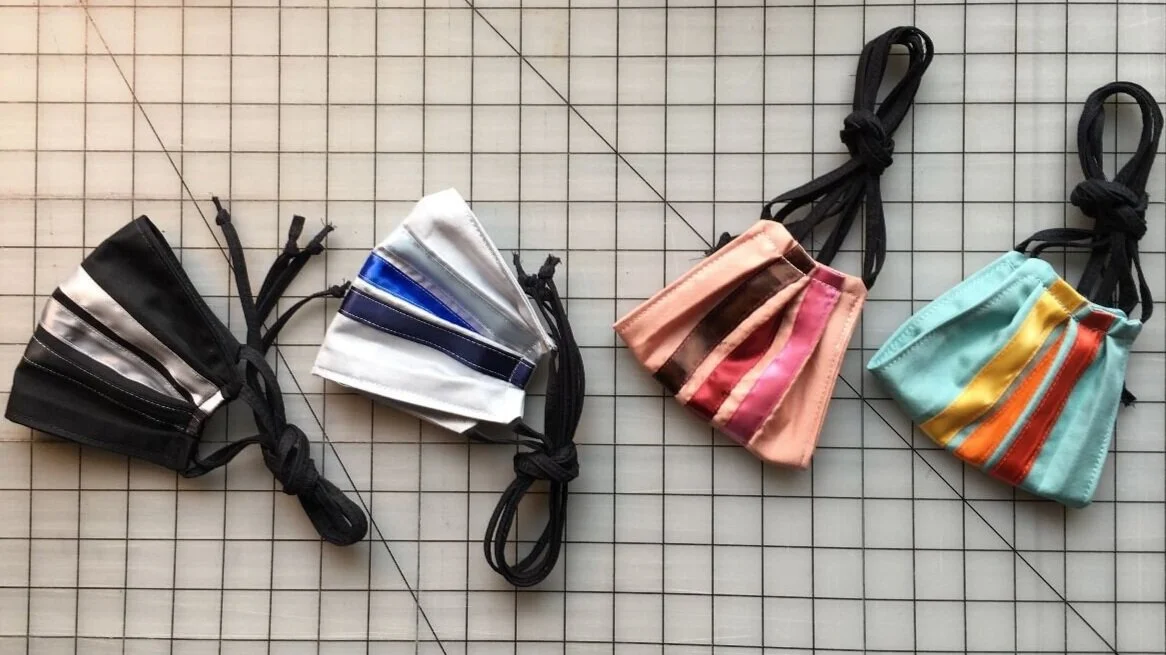Keeping People Safe with Native Art
Native communities are among the most vulnerable in the U.S., and this is playing out during the pandemic in new and disturbing ways. Indigenous people in Arizona and New Mexico are dying in disproportionately high numbers from the virus. And Indian Country, dependent on casino revenue and unable to collect taxes, is struggling to get emergency aid. Amid these disparities, Native artists are working to highlight these issues and honor their culture and traditions to help their communities.
Maggie Thompson, a member of Fond du Lac Ojibwe, a band of the Minnesota Chippewa Tribe, lost her day job cleaning houses when the pandemic hit. With more time on her hands, the Minneapolis-based textile artist began making and donating hundreds of CDC-compliant cotton masks to nonprofit hospital network Allina Health.
Thomspon then launched the Ribbon Mask Project through her knitwear business Makwa Studio (makwa means bear in Ojibwe), pledging to donate two cotton masks to clinics, hospitals and schools for every colorful mask with multicolor ribbons ($32) sold. In less than a week, she received 160 orders and hired Oglala Lakota artist Jaida Grey Eagle to help her. The project became so popular that they’re now working to backfill orders. Thompson spoke with me in early April about how things are going.
(This interview has been edited for length and clarity.)
When did you begin making masks for donation?
Weeks ago, after I stopped cleaning, a former professor was posting about New York’s upcoming mask shortage, so I went out and bought supplies. I was creating masks for health care workers, grocery store workers and elderly people whose family and colleagues requested them. Usually my shop is made-to-order, but, moving forward, I’ll prep masks so I can get them out faster. I’ll be donating masks to the Minneapolis Native American Community Clinic and a local church’s homeless shelter.
Why did you start the Ribbon Mask Project?
It's a way to bring in income to support my efforts and hire another Indigenous artist. I wanted to bring Native and Indigenous culture to the forefront [of pandemic efforts]. I enjoy working with and helping others, so this project has really helped me mentally and emotionally, too.
What is the significance of the ribbon mask design?
It’s an homage to the ribbon skirt. Ribbon was brought over by the French settlers and exchanged with Great Lakes tribes. It was used for clothing and became a symbol for adaptation and survival, especially among women. The design evokes respect and care for our elders – something that I think is an issue in broader American culture – and how the pandemic will affect Native communities.
How can people help mask makers fulfill the demand?
My mom and her friends have helped cut fabric for this project, and I think that helps ease the workload for overwhelmed sewers. Also asking folks if they need materials like fabric or thread or donations for shipping costs, that’s something folks have reached out to me about. And it’s been helpful in getting the project moving.





